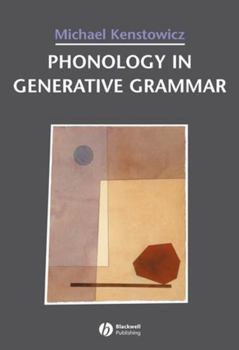Phonology in Generative Grammar
(Part of the Blackwell Textbooks in Linguistics Series)
Select Format
Select Condition 
Book Overview
This is the most comprehensive and current introduction to phonological theory and analysis. Presupposing only minimal background in linguistics, the book introduces the basic concepts and principles of phonological analysis and then systematically develops the major innovations in the generative model since Chomsky and Halle's Sound Patterns of English (1968). Careful study of the text will enable the student to read the current scholarly literature with critical understanding and some perspective. Some unique features of the book include a set of exercises reinforcing the basic concepts and principles, illustrations from a variety of languages based on published and unpublished materials, a survey of all the major lines of research in phonological theory, and an extensive bibliography. Phonology in Generative Grammar is supported by an instructor's manual.
Format:Paperback
Language:English
ISBN:1557864268
ISBN13:9781557864260
Release Date:January 1994
Publisher:Wiley-Blackwell
Length:720 Pages
Weight:2.64 lbs.
Dimensions:1.5" x 6.7" x 9.6"
Customer Reviews
2 ratings
Well-informed, poorly laid-out
Published by Thriftbooks.com User , 24 years ago
Kenstowicz's textbook is an excellent starting place for an more in-depth examination of phonological theory. While he presents his arguments in a cogent fashion, the structure of the textbook leaves a great deal to be desired. It is probably most beneficial for a student or teacher to jump around the book putting things together that for some reason have been separated. But on the whole, I feel like this book provides a detailed presentation of both linear and non-linear phonology with a wealth of challenging and informative exercises. An excellent resource for graduate level work in phonology.
Wonderful Intro to basic problems in phonological theory
Published by Thriftbooks.com User , 24 years ago
This text is a classic and should be required reading for any non-introductory student of phonology. Its strengths include its discussion of the basic issues of phonology and its lovely problem sets.Its greatest weakness is that many of the issues so clearly laid out in this book were of great concern to phonologists in 1977, but less so today.Still, while the model that phonologists use to represent, for example, "rule ordering" has changed, the discussion of "feeding," "counter feeding," "bleeding," and "counter bleeding" in this text, and certainly the language examples are relevant today.This book may not be ideal for a student who takes only one course in phonology since some of the discussion is outdated and a bit complicated. It is, however, a good place to start for any student who wishes to understand the issues of generative, linear phonology, even if only out of historical interest.






